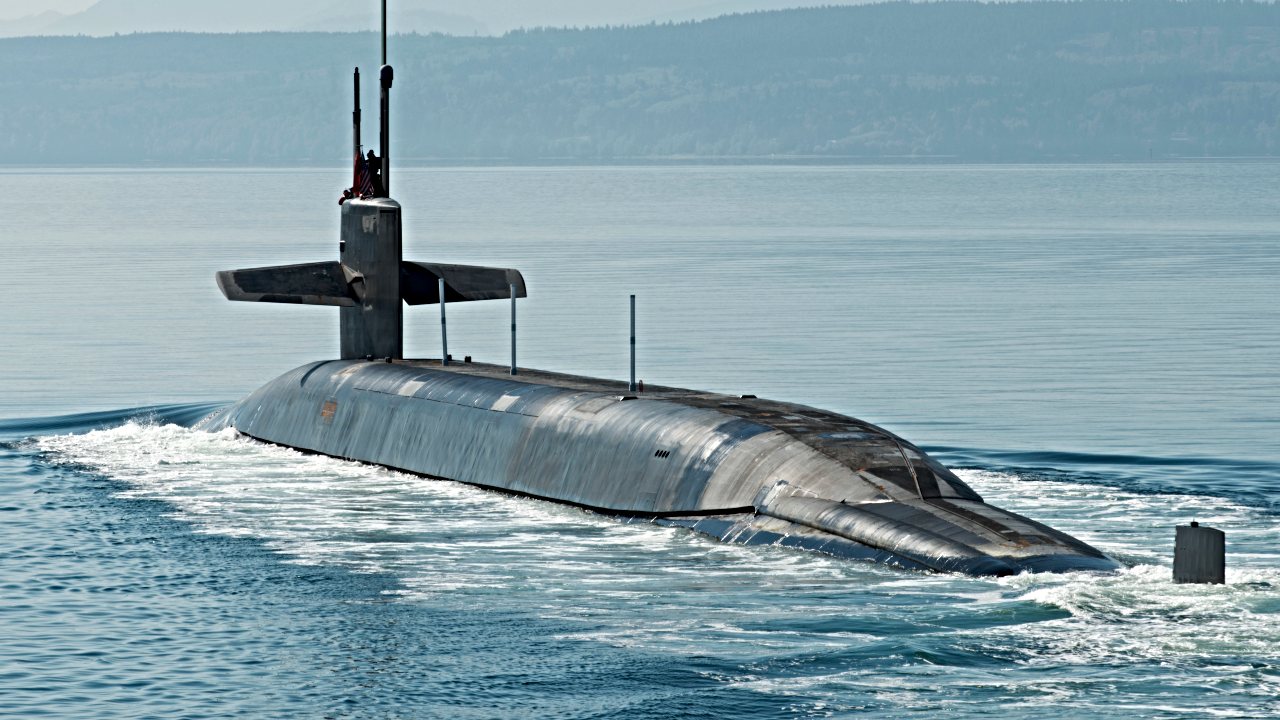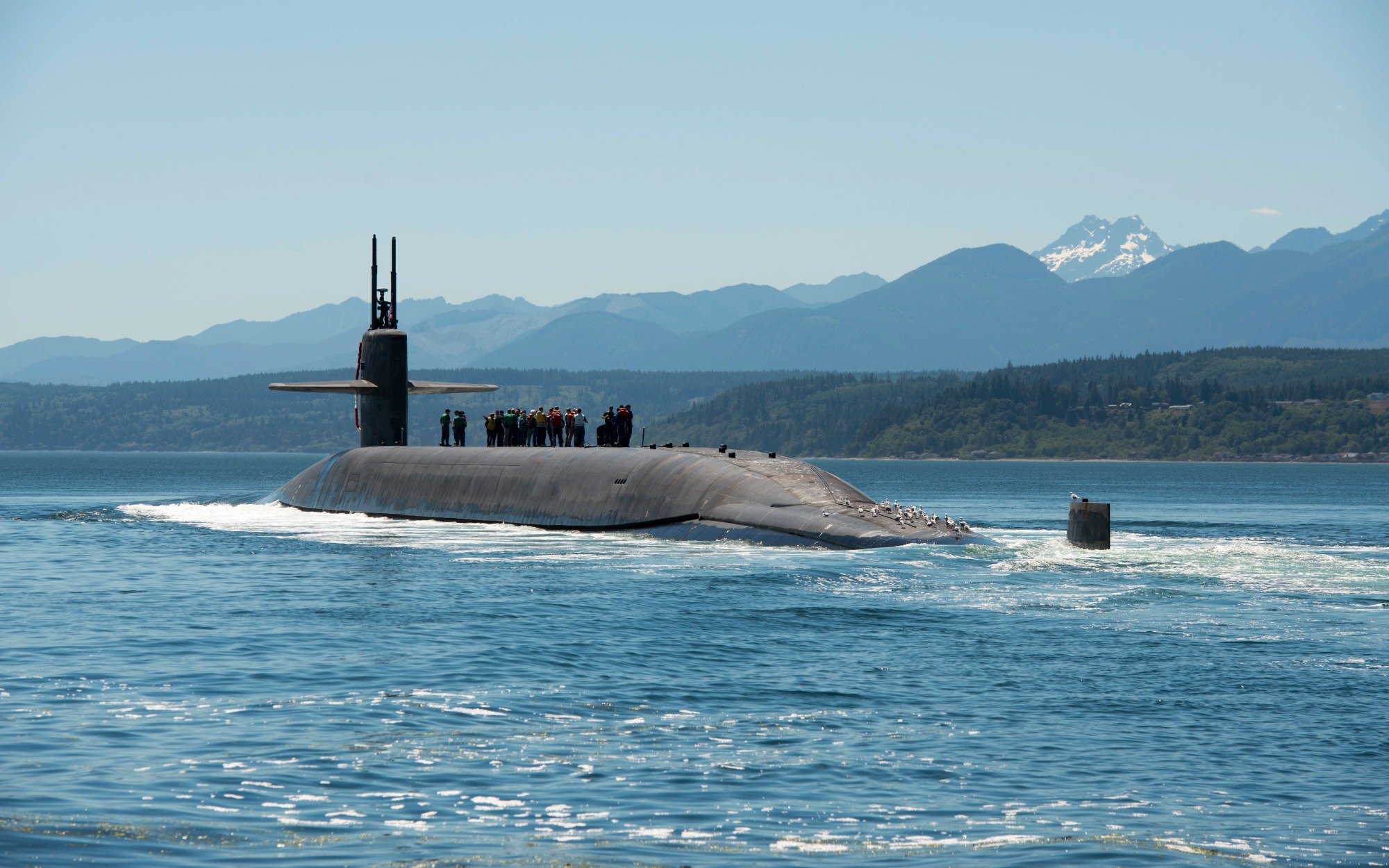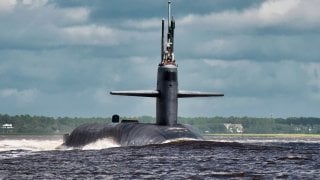462 Tomahawk Missiles: 'China Freaked' When Navy Surfaced 3 Missile Subs 'At Once'
In June 2010, the U.S. Navy conducted a rare display of strength in response to China’s missile testing, surfacing three Ohio-class SSGNs in strategic locations across the Indo-Pacific.
What You Need to Know: In June 2010, the U.S. Navy conducted a rare display of strength in response to China’s missile testing, surfacing three Ohio-class SSGNs in strategic locations across the Indo-Pacific.

-These submarines—USS Michigan, USS Ohio, and USS Florida—revealed their presence in South Korea, the Philippines, and Diego Garcia, showcasing the Navy's capability to operate anywhere and reminding China of the U.S.'s naval reach and readiness.
-Armed with nearly 500 Tomahawk cruise missiles, these submarines exemplified America’s power projection, a key deterrent as China’s A2/AD strategy increasingly challenges traditional U.S. naval operations in the region.
U.S. Flexes Naval Muscle Against China with Strategic Submarine Showdown
The U.S. military has a bone to pick with China.
Chinese pilots fly dangerously close to American airplanes.
Naval vessels from China also steam threateningly toward U.S. ships. Politicians talk tough about Beijing and the public is frustrated about China’s rise at the expense of the United States. Sometimes in these moments, a show of force is needed to demonstrate that one navy means business.
That’s what happened in June of 2010 when three Ohio-class (SSGN) guided missile submarines surfaced in an effort to show China that the boats could sail anywhere in the world. It happened in the Western Pacific and Indian Ocean after the Pentagon became frustrated by a Chinese missile test in the East China Sea.

The Big Flex
China’s ballistic missile program is one of the best in the world. They have everything from nuclear-tipped ICBMs that can reach the continental United States and short-range missiles that could destroy many parts of Taiwan. But to show it was not afraid, the U.S. Navy flexed its muscles against China 14 years ago.
That’s when the USS Michigan in Pusan, South Korea, the USS Ohio in Subic Bay, in The Philippines and the USS Florida in the Indian Ocean base of Diego Garcia came to the surface and said, “Here we are.”
Almost 500 Cruise Missiles
Those three boats carried a total of 462 Tomahawk cruise missiles. This huge amount of firepower could put a dent in Chinese intentions to someday take Taiwan by force. The Tomahawks have a range of 1,000 miles and can be targeted to a diverse range of enemy assets. The subs run silent and run deep anywhere in the world and the U.S. Navy rarely allows them to even peek out of the water for short periods.
“There’s been a decision to bolster our forces in the Pacific,” said Bonnie Glaser, a China expert who, at the time, worked for the Center for Strategic and International Studies.
She told Time Magazine in 2010 that “There is no doubt that China will stand up and take notice.”

Likely By Design
Time said the U.S. Navy released a statement that the appearance of the SSGNs was only a “coincidence.” But the action clearly sent a message to China, plus Russia, Iran, and North Korea.
The Chinese government did not over-react to the flotilla of missile subs, but a spokesman was concerned about the U.S Navy’s decision to surface the boats.
“At present, common aspirations of countries in the Asian and Pacific regions are seeking for peace, stability and regional security,” Baodong Wang, spokesman for the Chinese embassy said in 2010. “We hope the relevant U.S. military activities will serve for the regional peace, stability and security, and not the contrary.”
Missile Subs Have Many Advantages
The SSGNs can also deliver Navy SEALs to war zones around the world should a special ops unit be needed. They can use their cruise missiles at a moment’s notice to address hot spots and will be a significant asset for the navy in the future.
While the navy usually deploys aircraft carrier strike groups to send a message to adversaries, the flat-tops are threatened by China’s array of carrier-killing missiles. This may create an asymmetric edge for China that could build an environment of anti-access/ area-denial that could crimp U.S. naval strategy in the East and South China Sea.
That means U.S. submarines would have a larger role in the Indo-Pacific. China has a growing submarine force too, but they are no match for the American boats in terms of their low acoustic signature and ability to run undetected.
We may see more submarine shows of force in the future. It is a low risk way to send a message to adversaries and show the U.S. military can display a certain amount of aggressiveness to remind China and other powers that Americans can also raise the stakes in any potential combat theater around the world.
About the Author
Brent M. Eastwood, PhD, is the author of Humans, Machines, and Data: Future Trends in Warfare. He is an Emerging Threats expert and former U.S. Army Infantry officer.
All images are Creative Commons.


